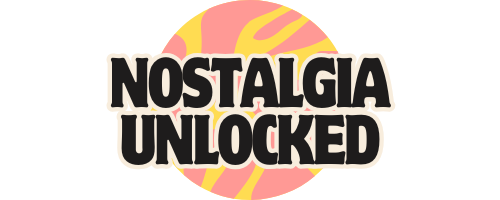22 Obsolete Everyday Tasks Only Boomers Might Remember
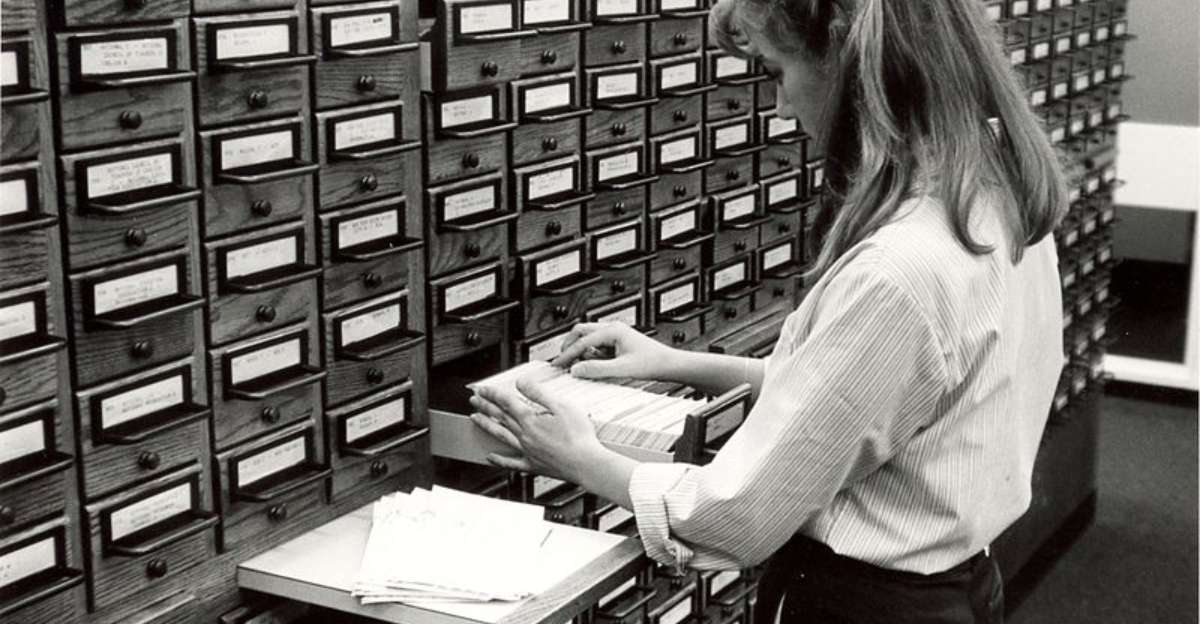
In a world where smartphones can practically think for us—answering questions, navigating cities, and even finishing our sentences—it’s easy to forget the everyday tasks that once dominated daily life.
These weren’t just chores; they were tiny triumphs that demanded patience, skill, and sometimes a little luck. Boomers remember them fondly, like battle scars from a simpler, analog era. Ever tried folding a paper map in a gust of wind? You became an impromptu navigator, trying not to end up in the next town over.
Or remember the fine art of adjusting rabbit ear antennas just right—holding your breath, leaning at an awkward angle, and praying for a static-free picture? That was TV gymnastics! From using rotary phones and waiting weeks for film to be developed, to balancing a checkbook manually and calling movie theaters for showtimes, these activities were once the rhythm of everyday life.
Now, they’re charming relics, barely remembered unless someone brings up “the good old days.” So let’s take a walk down memory lane—through 22 forgotten yet unforgettable tasks that remind us how far we’ve come, and how entertainingly complicated life used to be before tech made everything just a tap away.
1. Navigating with Paper Maps
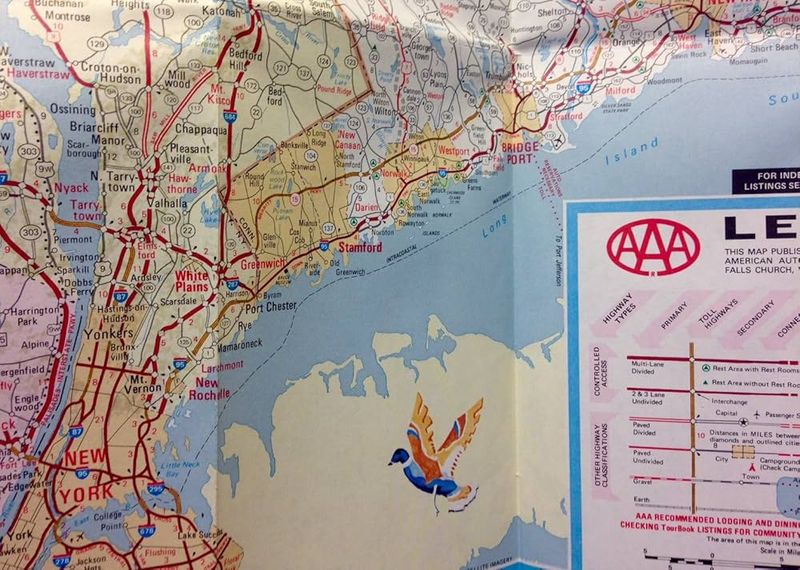
Oh, the thrill of unfolding a paper map, the original GPS, if you will. Remember the maze of turns and intersections that awaited your best guess? Navigating meant transforming into a top-class detective, deciphering the tangled webs of streets and highways. My first road trip involved a paper map so large, it could double as a picnic blanket.
Picture this: a car full of snacks and the smell of adventure, with my copilot flipping pages like a suspense novel. We were the Lewis and Clark of our time, sans the Internet. Who needed Siri when you had intuition and a good ol’ compass?
Did you know that the first road maps were printed in the early 20th century? They were considered revolutionary, a must-have for every glove box. Oh, the nostalgia of paper cuts and the sweet sense of accomplishment upon reaching our destination. Now that’s something no app can replicate!
2. Writing in Cursive
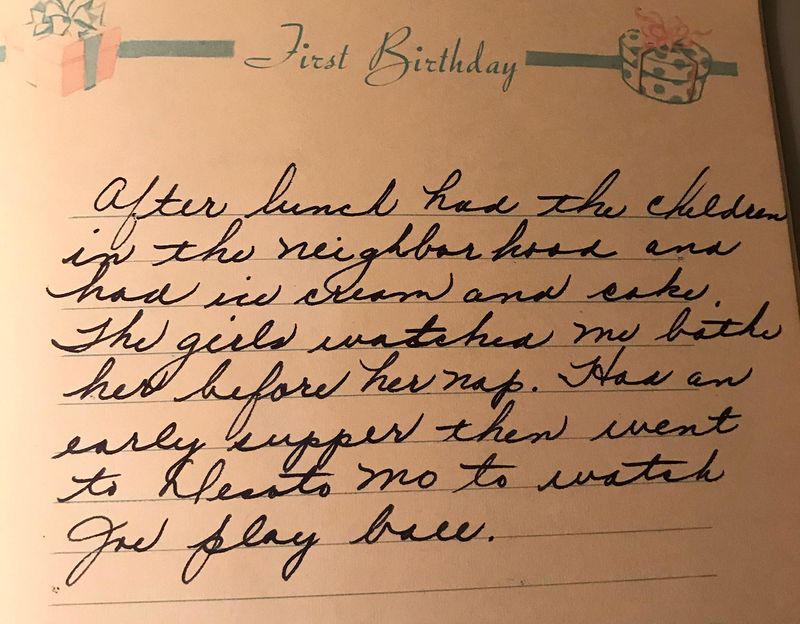
Cursive, the artful dance of the pen, once a rite of passage in school. Remember when penmanship was an actual grade? Writing in cursive was akin to performing calligraphy in everyday life. It was more than just writing; it was an eloquent expression of one’s identity.
My first love letter was crafted in cursive, each loop and swirl imbued with emotions that printed text couldn’t convey. The elegance of cursive was unmatched, transforming mundane notes into beautiful scripts. The occasional inky blots were badges of creativity, not mistakes.
Fun fact: Cursive writing traces back to the 15th century, with its peak in the mid-20th century. Teaching cursive in schools has become as rare as finding a VHS player in the wild. Yet, for many, those swooping letters are etched in memory, like echoes of a bygone era. Perhaps it’s time for a cursive comeback, if only for nostalgia’s sake.
3. Balancing a Checkbook
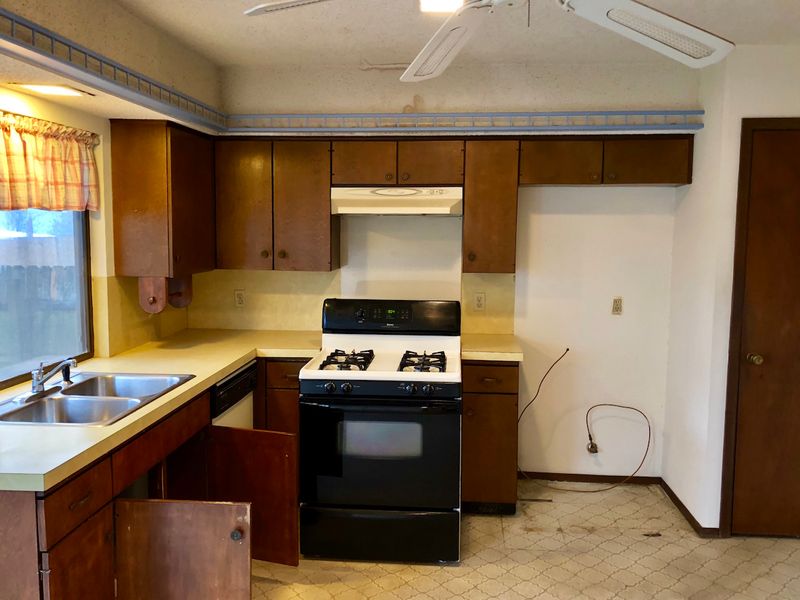
Ah, the art of balancing a checkbook, a skill that combined math, patience, and a little bit of pen twirling. Before the era of banking apps, this was how we kept track of those precious dollars and cents. I remember sitting at the kitchen table, pen in hand, ledger open, feeling like a financial wizard.
The ritual involved a calculator, a coffee cup, and often, a magnifying glass for those tiny numbers. My first attempt at it felt like cracking the Da Vinci Code. Each entry was a story of spending and saving, a narrative of financial journeys.
Did you know? The checkbook balancing act began in earnest in the 19th century when personal banking became widespread. While today’s digital age makes this task nearly obsolete, the satisfaction of a balanced checkbook was unrivaled. It was financial Zen in a ledger, a practice that taught discipline and forethought, now replaced by digital ease.
4. Using a Card Catalog
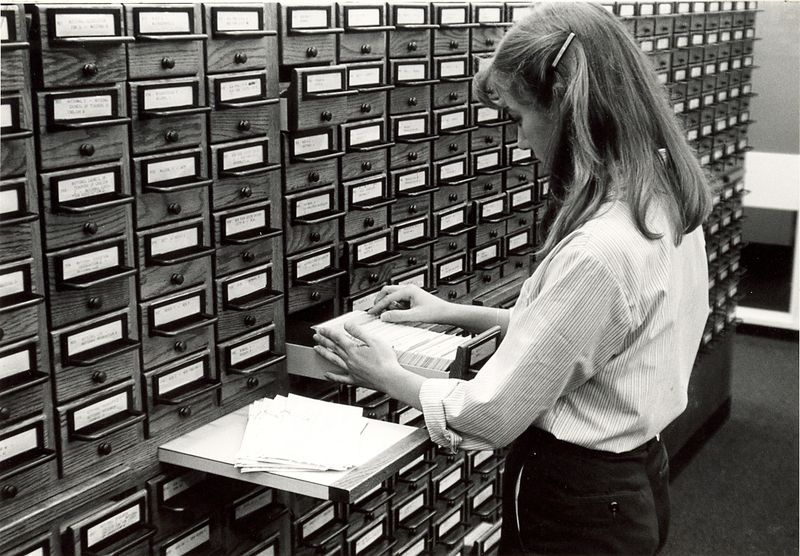
Delving into a card catalog was like embarking on a treasure hunt. These wooden drawers held the key to the universe of knowledge stored within the library. The Dewey Decimal System was our GPS, guiding us through the labyrinth of wisdom.
I recall the thrill of finding the right card, the tactile sensation of flipping through them, and the satisfaction of finally tracking down the book that promised to unlock new worlds. Each card was a promise, a whisper of stories waiting to be discovered.
Fun tidbit: The card catalog has its roots in the 19th century, revolutionizing how we navigated libraries. In today’s digital age, they are mostly relics, replaced by online catalogs. Yet, for those of us who roamed library aisles, these card-filled cabinets are symbols of an era where discovery was a tactile adventure. They were Google before Google was cool.
5. Developing Film Photos
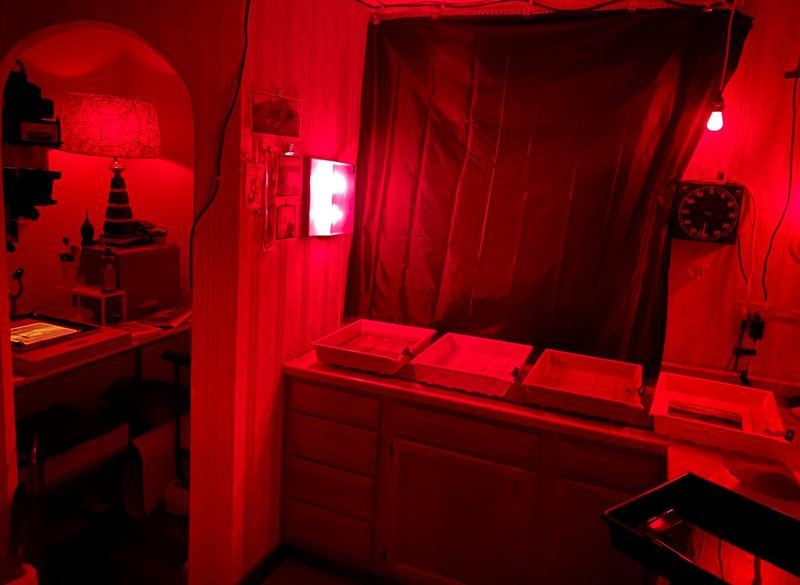
Imagine the alchemy of turning negatives into photographs, a process as mysterious as it was magical. Developing film photos required patience, precision, and a love for the art. I remember my first darkroom experience, the anticipation of seeing images emerge under the glow of red light.
The darkroom was a sanctuary, where time seemed to slow, and creativity came to life. It was a dance of chemicals and timing, a ritual that transformed moments captured in film into tangible memories. Each photo was a masterpiece in the making.
A fun fact: The first commercially available film cameras appeared in the late 19th century. Now, as digital photography reigns supreme, the art of film development becomes a nostalgic craft. The process taught us the value of patience and anticipation, qualities that are often overshadowed in our instant-gratification age. Film had a tangible romance that digital lacks, a connection to the art’s roots.
6. Repairing Household Items

Fixing things was a badge of independence, a testament to human ingenuity in the domestic sphere. With a toolbox at hand, the home became a workshop of wonders. I fondly recall my first attempt at fixing our toaster, armed with only a screwdriver and sheer determination.
In those days, repair manuals were the guiding stars, and each successful fix felt like winning a mini battle against entropy. The satisfaction of a working appliance was second only to the joy of saving money on repairs.
Did you know? The DIY repair culture peaked during the mid-20th century, when consumer goods were built to last. Now, in a world doused in disposables, these skills are becoming rare. Yet, there’s something delightfully retro about being able to fix a wobbly chair or a sputtering toaster. It’s a reminder that not everything needs to be thrown away; sometimes, a little TLC is all it takes.
7. Using a Rotary Phone
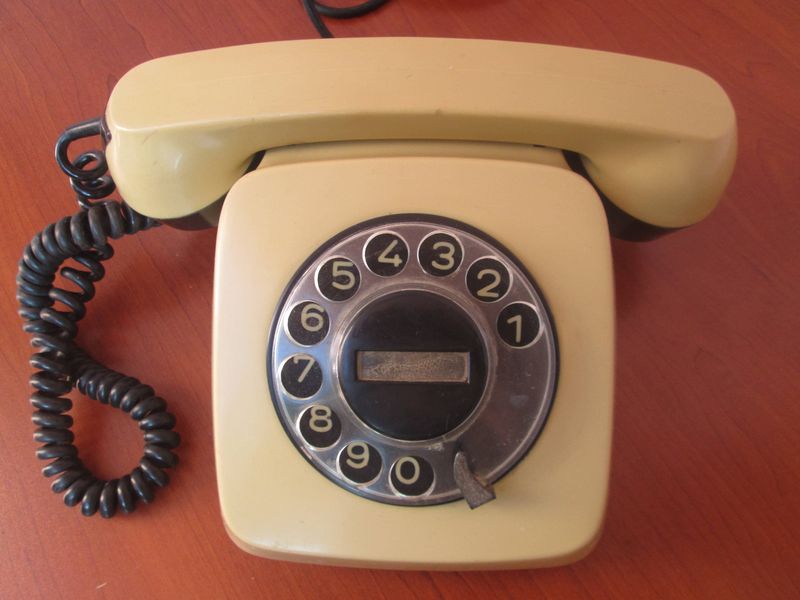
Dialing a rotary phone was an exercise in patience and precision. Each twist of the dial represented a step in communication, a task that required both time and dexterity. I remember the satisfying click-clack of the dial returning to its original position.
These phones were sturdy, built to withstand the test of time and countless phone numbers. Calling a friend meant memorizing their number, a mental gymnastic often lost in today’s digital convenience. The rotary phone demanded your full attention, no multitasking allowed.
Fun fact: The rotary dial was first patented in the late 19th century and remained popular through much of the 20th century. Now, as smartphones dominate, the rotary phone has become a charming antique. Those who used them remember the anticipation of hearing a loved one’s voice from the other end, a connection that felt tangible and personal. It’s a relic of an era where communication was an event.
8. Making Calls from a Payphone
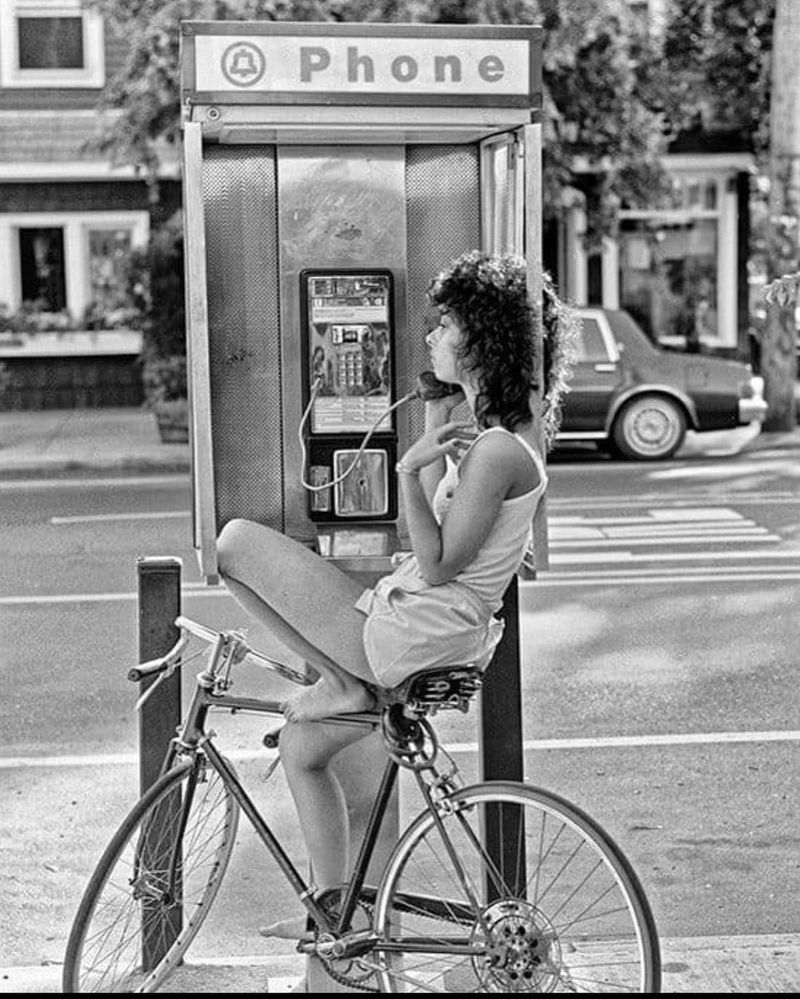
The iconic payphone, a fixture of urban life, stood sentinel on street corners, ready to connect you to the world. Making calls on a payphone was a dance with destiny, armed only with coins and a memorized number.
I recall the weight of coins jangling in pockets, the thrill of hearing the dial tone, and the urgency of getting your message across before the coins ran out. Each call felt like a covert mission, a race against time and money.
Did you know? The first payphone was installed in the late 19th century, ushering in a new era of public communication. As mobile phones now rule, payphones have become relics, symbols of a pre-digital era. But for those of us who lived through them, they were lifelines in metal booths, gateways to the world outside. The nostalgia of payphones is a testament to how far communication has come.
9. Using a Thomas Guide
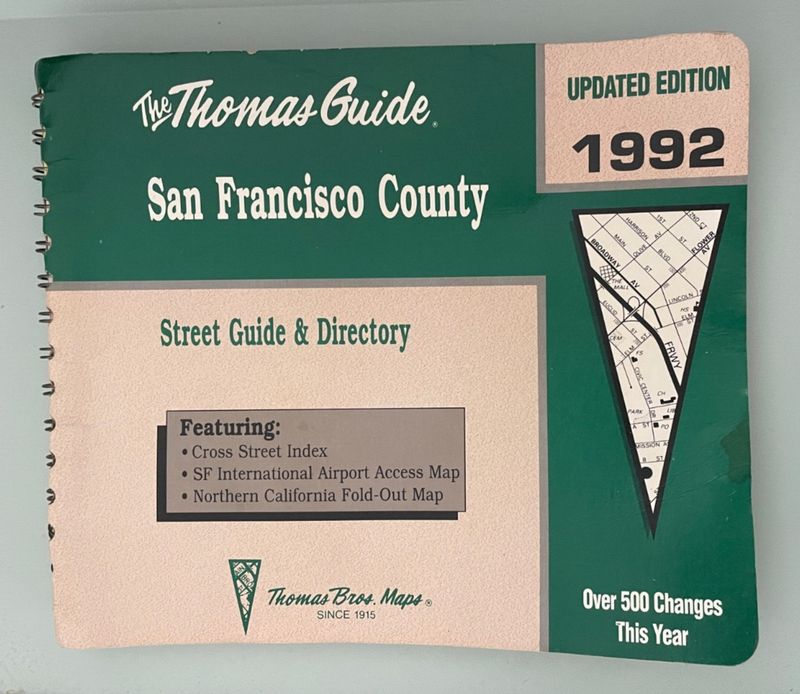
The Thomas Guide, a navigator’s bible, was indispensable for traversing the urban jungle. Each page was a cartographic masterpiece, detailing every street and alleyway with precision. I remember the joy of tracing my finger along the map, plotting adventures.
These guides were hefty tomes, turning every road trip into a strategic exercise. The thrill of conquering the streets without digital aid was unparalleled. My first Thomas Guide experience felt like holding a city’s secrets in my hands.
Fun tidbit: The Thomas Guide became a household name in the mid-20th century, essential for anyone behind the wheel. In the era of GPS, these guides are now collectibles, cherished for their detailed craftsmanship. They remind us of a time when navigation required skill, not just a smartphone app. The Thomas Guide was more than a book; it was a trusted companion on the open road.
10. Operating a Manual Transmission Car
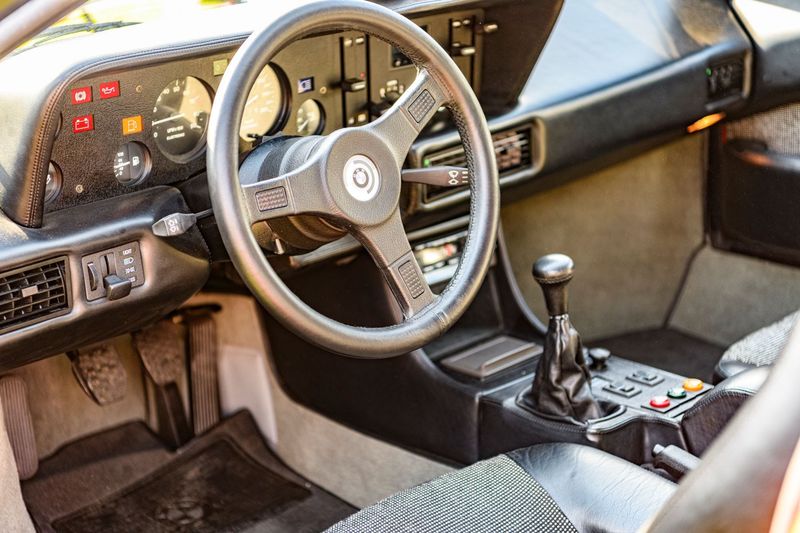
Driving a stick shift was a symphony of gears and pedals, a skill that connected driver to machine. Each shift was a tactile delight, transforming the mundane into an art form. I fondly recall the thrill of mastering the manual transmission, a rite of passage for many.
The coordination required was no less than a dance, timing and rhythm working in harmony. A manual car gave you control, a feeling that today’s automatics can’t replicate. My first gear shift felt like unlocking a new level of driving.
Did you know? Manual transmissions were the norm until the mid-20th century, when automatics began to take over. Now, as automatics dominate, driving manuals are nostalgic for many, a link to a time when driving was an engaging experience. They’re not just vehicles; they’re instruments of freedom, a testament to the driver’s skill and connection to the road.
11. Using a Slide Rule
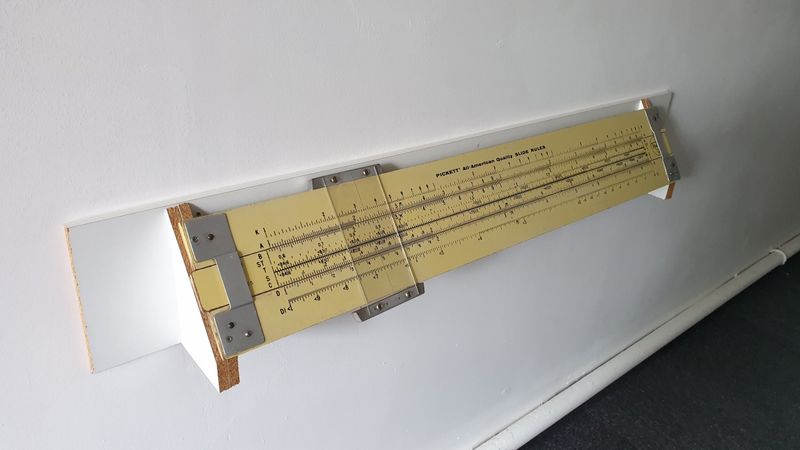
The slide rule, a mathematical wand, was the tool of choice for complex calculations before calculators took the stage. These rulers of arithmetic demanded an understanding of logarithms and the dexterity to align their scales.
I remember my first slide rule lesson, a mix of awe and confusion, as numbers danced across its surface. The satisfaction of solving equations manually was a testament to the brainpower of the pre-digital age.
Fun fact: The slide rule was developed in the 17th century and remained popular for engineering and scientific calculations until the 1970s. Today, they’re charming relics, a symbol of the era when math was as much about skill as it was about numbers. For those who wielded them, slide rules were swords of knowledge, slicing through mathematical challenges with precision and grace.
12. Shorthand Writing
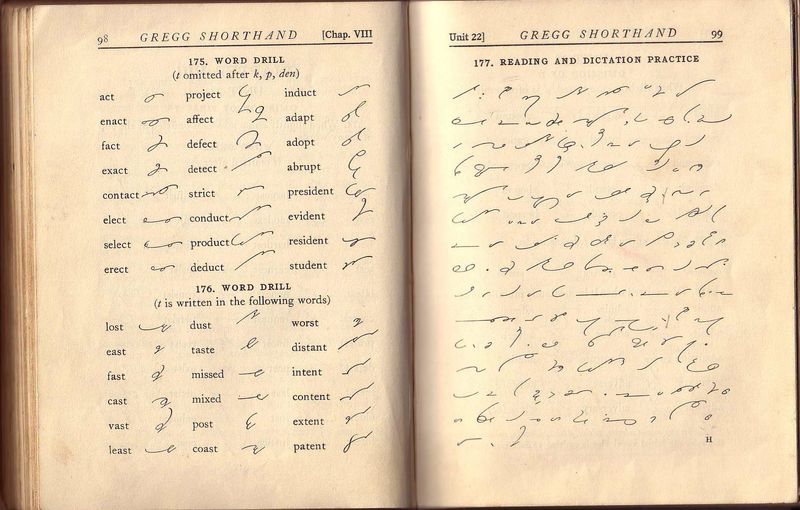
Shorthand, the cryptic script of speed, transformed spoken words into written records at a breakneck pace. The skill was a must-have for secretaries and journalists, condensing language into symbols and strokes.
I recall my first attempt, capturing a meeting’s essence in an array of hieroglyphs. Each stroke was a swift whisper, a testament to the art of listening and writing in harmony.
Did you know? Shorthand has its origins in ancient Rome and became a staple in the 20th-century office before falling out of favor with the advent of digital recorders. For those who mastered it, shorthand was more than a skill; it was a badge of precision and professionalism. It’s a reminder of a time when speed and accuracy were honed through practice, not electronics.
13. Dialing a Rotary Phone Quickly
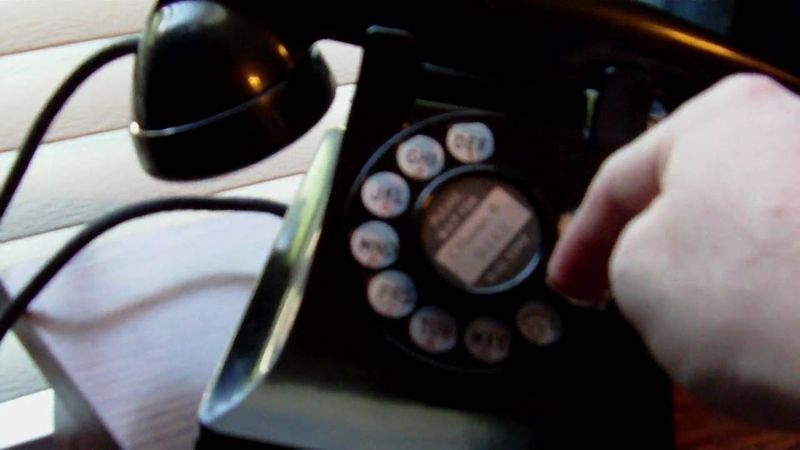
Speed dialing on a rotary phone was a skill, an art, and sometimes a necessity. Each click of the dial was a countdown, where haste met precision in a whirl of numbers.
I recall the urgency of dialing that last digit as the phone rang somewhere far away. The rhythm of the rotary dial was a dance, a pulse of anticipation and connection.
Fun tidbit: Though rotary phones are now antiques, their design influenced the development of touch-tone systems that followed. For those of us who mastered them, speed dialing was a thrilling challenge, a testament to the agility of fingers and mind. It’s a nostalgic nod to a time when every call was an event, filled with the excitement of connection and the satisfaction of mastering a bygone technology.
14. Reading an Analog Clock
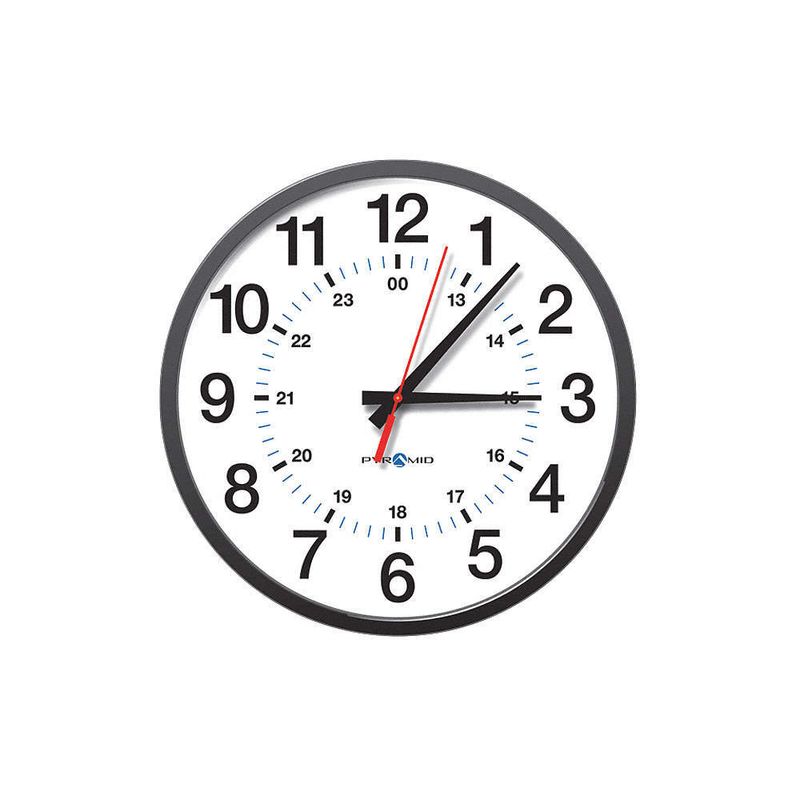
Reading an analog clock was a rite of passage, a skill that opened the doors to time’s mysteries. Each tick of the second hand was a beat of life, a rhythm that governed the day.
My first watch was an analog beauty, a rite of childhood, and a lesson in patience and understanding. The dance of hands on the clock face was a ballet of numbers.
Did you know? Analog clocks have been around since the 14th century, their design evolving through history. Now, in a world dominated by digital displays, reading an analog clock is less common, a nostalgic skill for those who grew up with them. They remind us that time is more than numbers; it’s a journey marked by the graceful sweep of hands across a circular face.
15. Using a Card Catalog Efficiently
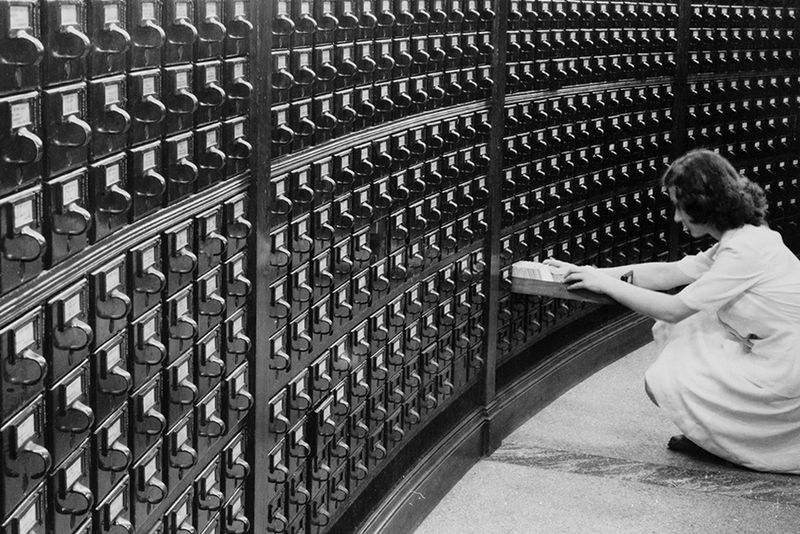
The art of efficiently using a card catalog was akin to mastering a labyrinth. Each drawer was a gateway to knowledge, each card a clue on the path to enlightenment.
I remember the satisfaction of finding the exact book after a strategic search. The card catalog was a tactile treasure map, guiding the way through a sea of books.
Fun fact: Card catalogs were the backbone of libraries until the late 20th century when digital systems took over. For those who experienced them, they were an adventure in organization and discovery. They taught us patience, strategy, and the joy of finding exactly what you were looking for, one card at a time.
16. Changing a Tire
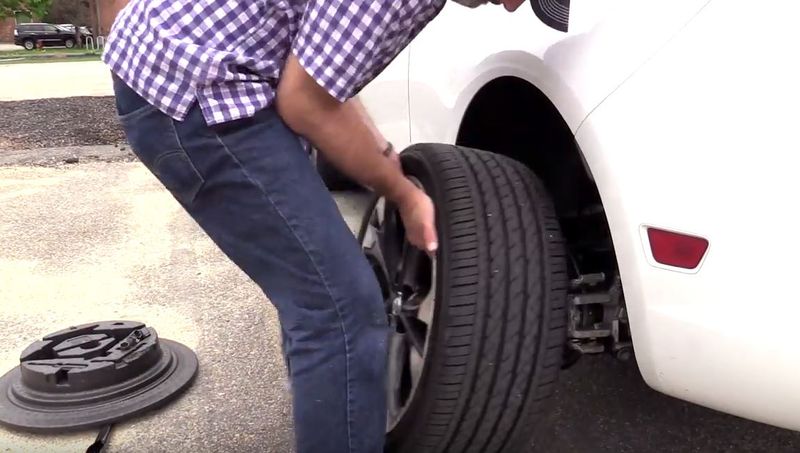
Changing a tire was more than just a skill; it was a testament to self-reliance. Each turn of the wrench was a step towards independence, a lesson in resilience on the open road.
My first tire change was an exercise in perseverance, a hands-on tutorial in mechanics under the open sky. The satisfaction of a job well done was second to none.
Did you know? The spare tire has been a staple in vehicles since the early 20th century, providing peace of mind to drivers everywhere. Now, with roadside assistance just a call away, changing a tire is becoming rare, but for those who mastered it, it remains a badge of honor. It’s a reminder that sometimes, the solution is in your own two hands.
17. Reading a Physical TV Guide
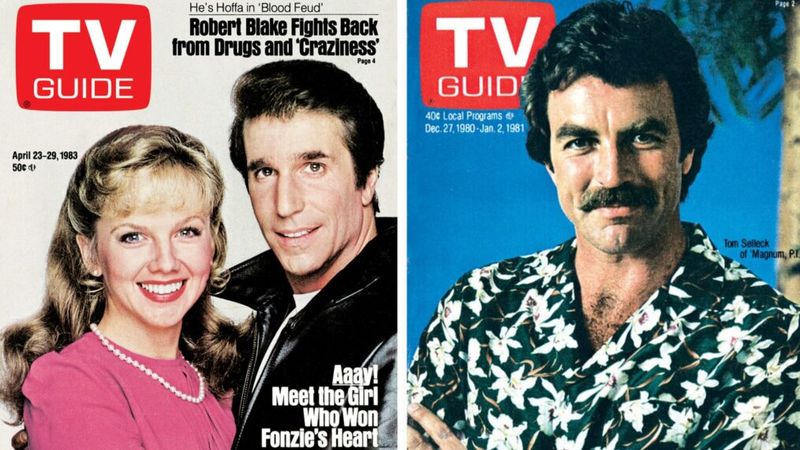
The TV guide, a beacon of the weekly viewing landscape, was essential for navigating the world of television. Each page was a peek into the shows and movies that would captivate us.
I remember gathering with family, TV guide in hand, planning our evenings with anticipation. It was a ritual, a shared experience that brought us closer together.
Fun tidbit: The TV guide first appeared in the mid-20th century, becoming an indispensable household item. Now, with digital guides at our fingertips, the printed TV guide is a relic. But for those who grew up with them, they were more than schedules; they were the promise of adventure, laughter, and entertainment, one page at a time.
18. Using Carbon Paper
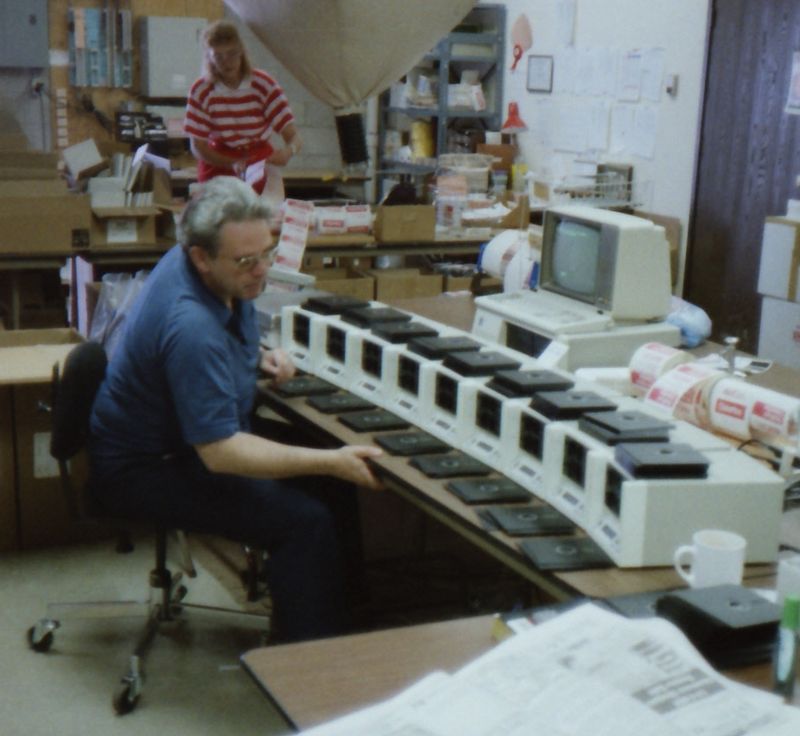
Carbon paper, the unsung hero of duplication, was the crux of creating multiple copies before the photocopier’s ubiquity. Each sheet was a promise of reproduction, an analog wonder.
I recall the smell of fresh carbon, the thrill of peeling apart copies like unwrapping a gift. It was a dance of layers and pressure, an art now mostly forgotten.
Did you know? Carbon paper was invented in the early 19th century and became a staple in offices worldwide. Today, it’s a rarity, eclipsed by digital convenience, but for those of us who used it, it was a testament to human ingenuity. It reminds us of a time when making copies was more than a click, it was a tactile experience that required skill and precision.
19. Adjusting TV Antennas
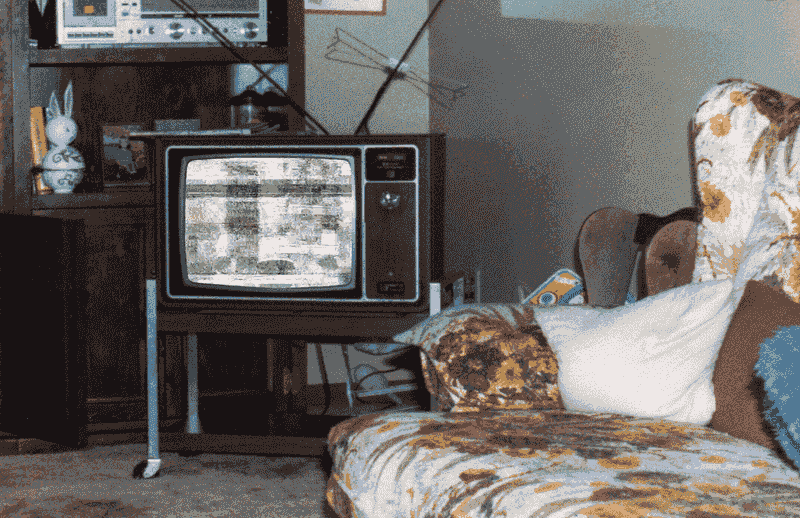
Adjusting TV antennas was a high-wire act of patience and precision. Each tweak was a quest for clarity, a dance with invisible waves.
I remember standing there, antennas in hand, the family’s viewing pleasure hanging in the balance. It was a balancing act, a ritual of trial and error.
Fun fact: TV antennas became common in households during the mid-20th century, before cable and satellite TV. Now, with digital signals, adjusting antennas is almost obsolete, but for those who remember it, it was a rite of passage. It taught us patience, perseverance, and just the right angle for that perfect picture, making every victory a shared family triumph.
20. Operating a Microfilm Reader
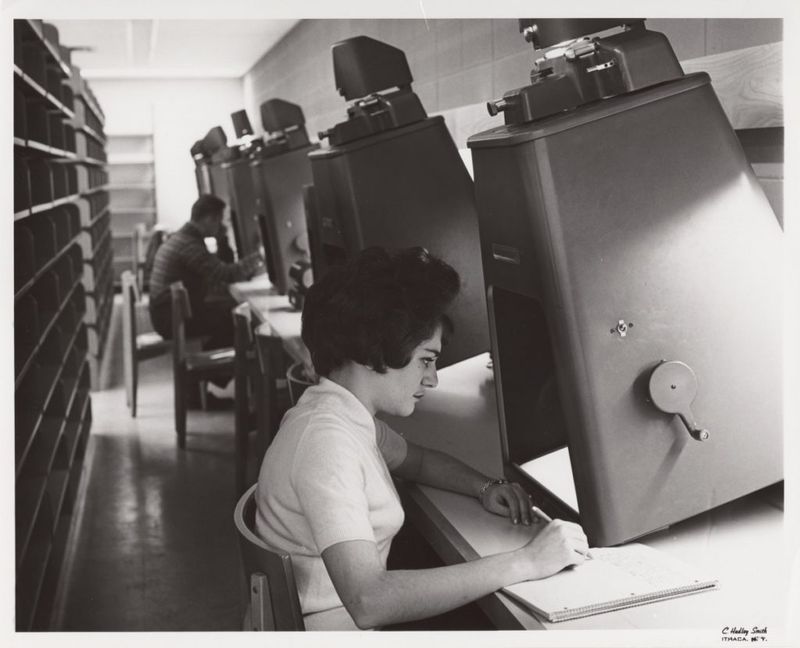
The microfilm reader was a portal to the past, a window into history stored on tiny reels of film. Each roll was a journey through time, captured in miniature.
I remember the hum of the machine, the whir of film unspooling with each turn of the knob. It was a tactile treasure hunt, a dive into yesteryear’s headlines.
Did you know? Microfilm has been used for archiving since the early 20th century, preserving newspapers and documents. Now, as digital archives take over, operating a microfilm reader is a fading skill, but for those who wielded them, they were gateways to discovery. They remind us of a time when research was hands-on, requiring patience, skill, and a keen eye.
21. Using a Typewriter Efficiently
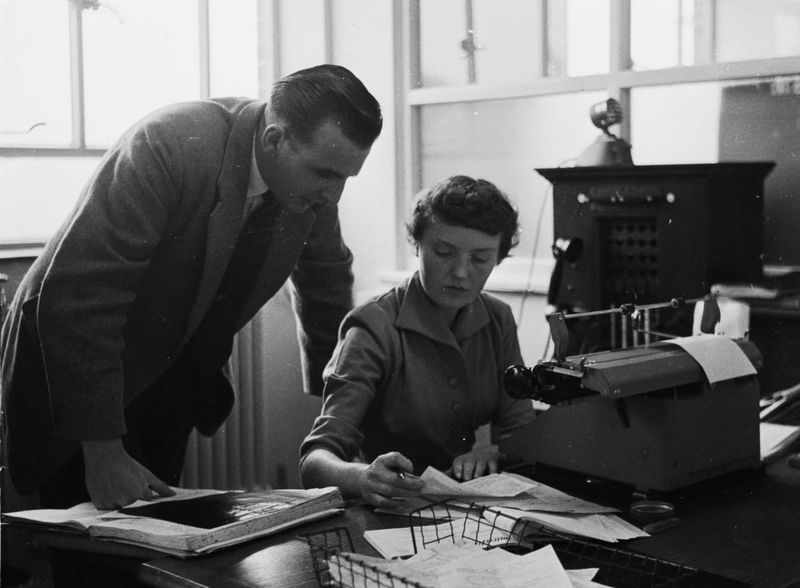
The typewriter, a symphony of keys and levers, was the heartbeat of the office. Each keystroke was a melody of letters, a testament to the art of wordsmithing.
I remember the rhythmic clatter, the ding of the bell, as pages filled with stories and reports. It was a dance of fingers and thoughts, a manual marvel.
Fun tidbit: Typewriters have been around since the 19th century, revolutionizing writing and business. Now, in the age of keyboards and screens, they’re relics, but for those who used them, they were more than machines; they were companions in creativity. The nostalgia of typewriters reminds us of a time when writing was an art, a craft honed through practice and passion.
22. Making Mixed Tapes
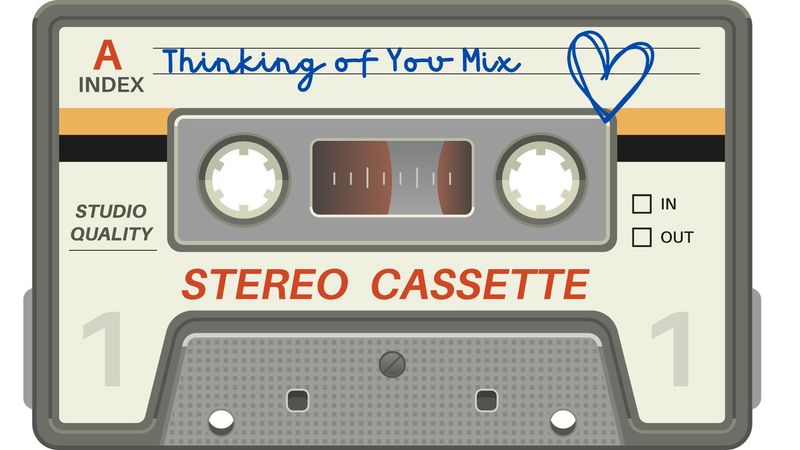
The mixed tape, a musical love letter, was the ultimate expression of taste and sentiment. Each track was a carefully chosen note, a piece of one’s soul shared through song.
I remember crafting my first mixed tape, agonizing over song order, balancing moods and tempos. It was a labor of love, a declaration captured in magnetic tape.
Did you know? The art of the mixed tape peaked in the 1980s and 1990s, becoming a cultural phenomenon. Now, with playlists and streaming, they’re nostalgic tokens of a bygone era. Making a mixed tape was about more than music; it was about connection, creativity, and the joy of sharing tunes that spoke to the heart. They were soundtracks to life’s moments, captured in analog glory.
